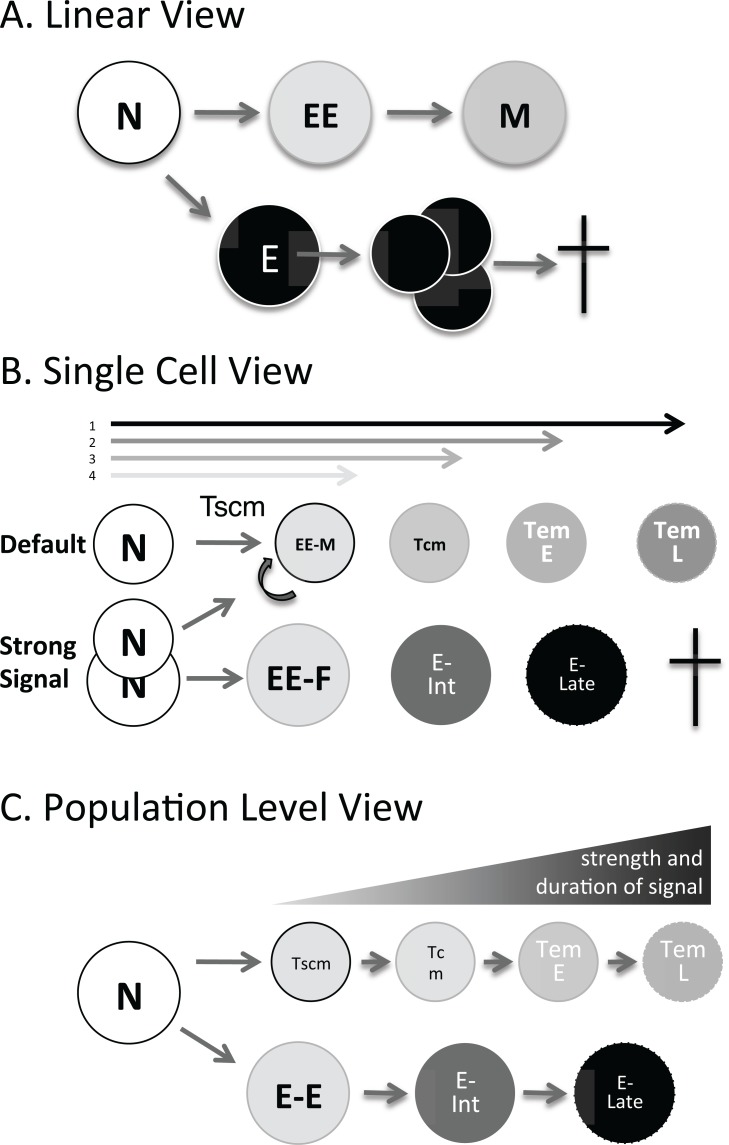Fig. (2).
Evolution of a model of Effector memory differentiation three views. A. The linear view suggests that Naïve T cells make early Effectors which make Memory, while mature effectors expand quickly, and die. CD8+ EE (and MPEC) and E (SLEC) are identifiable at the peak of infection [120, 175]. B. Each naïve T cell integrates it’s own signals (T cell receptor, co-stimulation and cytokines) over the lifespan of the antigen presenting cells with specific antigen. A strong integrated signal determines if a naïve T cell divides asymmetrically and generates both a Tmem and a Teff precursor or undergoes default programming to become memory. It also determines how many times a particular clone divides and what the phenotypic outcome is for that clone with asymmetric division potentially ensuring heterogeneity at each division. C. At the population level, considering all clones, populations purified by phenotype behave as shown with a linear pathway of differentiation from Tcm > Early Tem > Late Tem, and Early Effectors to later Effectors that die. The predominance of a given population at a given timepoint is determined by the collective strength of signal over time.

